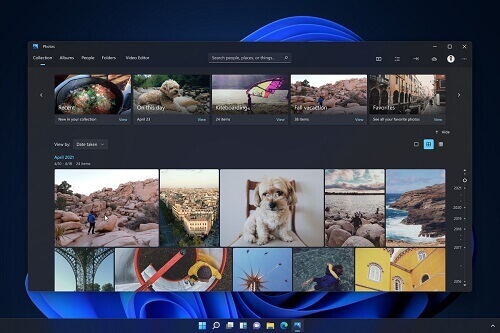How To Partition Your Windows 10 Hard Drive
Hard drive partitioning involves dividing the storage space of a computer’s hard disk into distinct sections, offering several advantages to the system owner.
By partitioning the hard drive, users can allocate space for crucial file backups on one partition, while the other partition serves for the temporary storage of Windows files and installed programs.
There are two primary methods for partitioning a drive. The first involves utilizing the built-in ‘Windows Disk Management Tool,’ which provides a native solution for this purpose.
Alternatively, users can opt for third-party applications such as Easeus Partition Master, GParted, or Mini Tool Partition to perform the partitioning.
Despite the availability of third-party tools, it is recommended to use the Windows partition tool for this task.
Leveraging the native Windows tool ensures compatibility and stability, reducing the potential risks associated with external applications. This approach simplifies the partitioning process while maintaining system integrity.
How To Partition Your Windows 10 Hard Drive Using Windows Tools
Follow the steps below to partition your hard drive using the Windows tools. The steps described below can be used to partition for Windows 10, 8, and 7.
- Click on the file explorer on the taskbar
- Click on ‘this PC’ which can be found on the left navigation panel
- From the menu that appears, click on ‘Manage’ to open the computer management window
- Click on ‘Disk management
- Now right-click on the disk that you want to partition
- Choose the shrink volume from the drop-down menu
- Input the amount of space that you want to shrink or partition in MB
- Click on ‘shrink’ and then wait as Windows creates the partition
- After the partition has been completed, you will be able to see the new unallocated space
- Right-click on the unallocated space and then choose ‘new simple velum’ from the menu that drops down.
- Follow the instructions until the new volume is created
After the creation is complete, your hard drive will now have a new partition. You can use that to back up your most needed files
Using Third-Party Apps
While it is possible to use third-party applications such as Easeus Partition Manager, GParted, and various others for hard drive partitioning, it is not the recommended approach.
Despite the availability of these external tools, we advise utilizing the Windows partition manager, which is a native feature designed for this specific purpose.
The Windows partition manager is an integrated tool created to ensure compatibility and system stability during the partitioning process.
Although third-party apps may offer similar functionalities, relying on the native Windows tool reduces the potential risks associated with external applications.
For optimal performance and reliability, it is recommended to leverage the features provided by the Windows operating system for hard drive partitioning.
Benefits Of Creating A Partition
- Keeps your important files safe
- Allows for easy re-installation of Windows operating systems
- Can install and run multiple operating systems on the computer easily without many fuses
- Simple backups
- Improves PC security
Conclusion
As delineated in the article, the process of creating a partition is characterized by its simplicity, requiring a manageable level of effort.
The inherent benefit of this procedure lies in its capacity to ensure the safety and security of your most vital files.
By designating a specific segment of the hard drive to house essential data, you fortify the organization and protection of critical information.
This pragmatic approach significantly contributes to the overall management and security of your digital assets.
Check out our recent articles:







